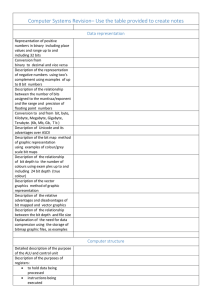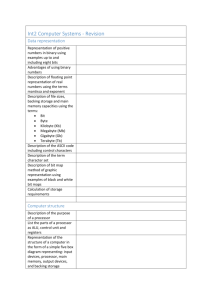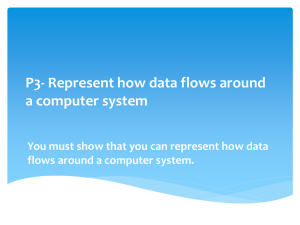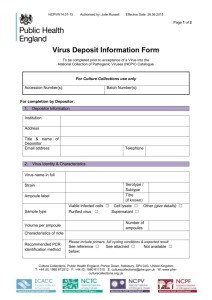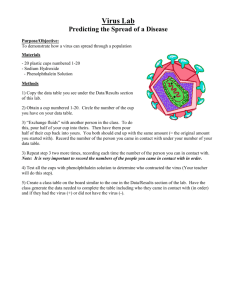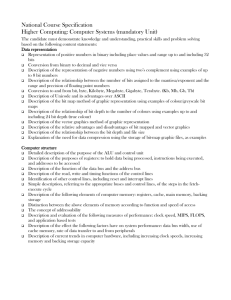Higher Computing: Artificial Intelligence
advertisement
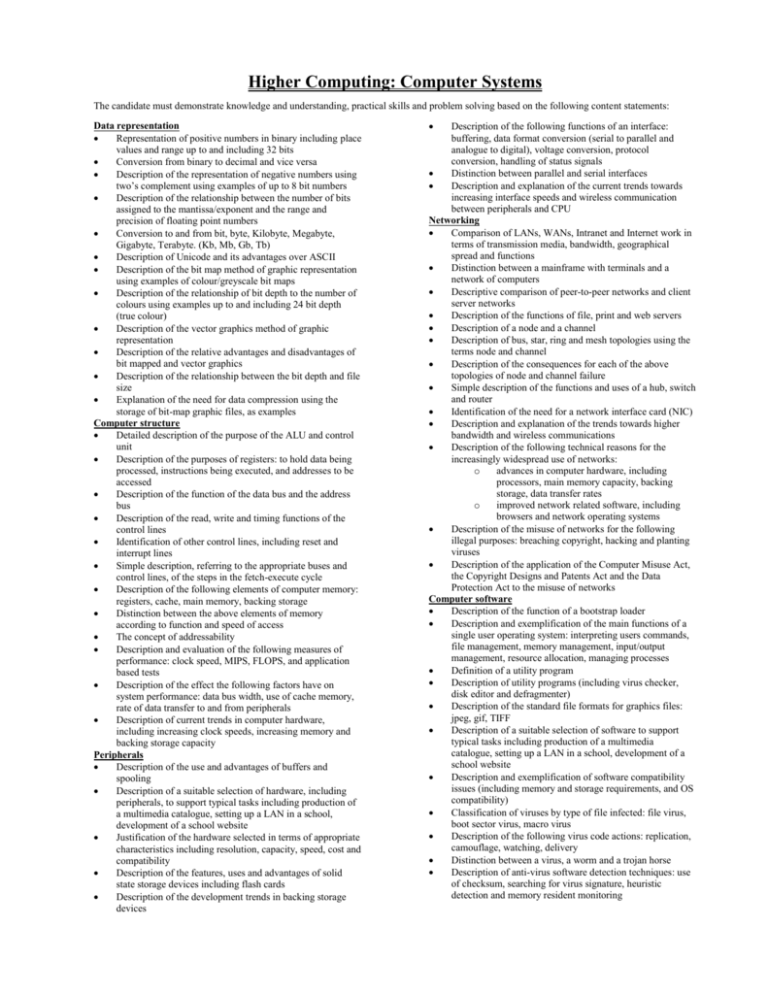
Higher Computing: Computer Systems The candidate must demonstrate knowledge and understanding, practical skills and problem solving based on the following content statements: Data representation Representation of positive numbers in binary including place values and range up to and including 32 bits Conversion from binary to decimal and vice versa Description of the representation of negative numbers using two’s complement using examples of up to 8 bit numbers Description of the relationship between the number of bits assigned to the mantissa/exponent and the range and precision of floating point numbers Conversion to and from bit, byte, Kilobyte, Megabyte, Gigabyte, Terabyte. (Kb, Mb, Gb, Tb) Description of Unicode and its advantages over ASCII Description of the bit map method of graphic representation using examples of colour/greyscale bit maps Description of the relationship of bit depth to the number of colours using examples up to and including 24 bit depth (true colour) Description of the vector graphics method of graphic representation Description of the relative advantages and disadvantages of bit mapped and vector graphics Description of the relationship between the bit depth and file size Explanation of the need for data compression using the storage of bit-map graphic files, as examples Computer structure Detailed description of the purpose of the ALU and control unit Description of the purposes of registers: to hold data being processed, instructions being executed, and addresses to be accessed Description of the function of the data bus and the address bus Description of the read, write and timing functions of the control lines Identification of other control lines, including reset and interrupt lines Simple description, referring to the appropriate buses and control lines, of the steps in the fetch-execute cycle Description of the following elements of computer memory: registers, cache, main memory, backing storage Distinction between the above elements of memory according to function and speed of access The concept of addressability Description and evaluation of the following measures of performance: clock speed, MIPS, FLOPS, and application based tests Description of the effect the following factors have on system performance: data bus width, use of cache memory, rate of data transfer to and from peripherals Description of current trends in computer hardware, including increasing clock speeds, increasing memory and backing storage capacity Peripherals Description of the use and advantages of buffers and spooling Description of a suitable selection of hardware, including peripherals, to support typical tasks including production of a multimedia catalogue, setting up a LAN in a school, development of a school website Justification of the hardware selected in terms of appropriate characteristics including resolution, capacity, speed, cost and compatibility Description of the features, uses and advantages of solid state storage devices including flash cards Description of the development trends in backing storage devices Description of the following functions of an interface: buffering, data format conversion (serial to parallel and analogue to digital), voltage conversion, protocol conversion, handling of status signals Distinction between parallel and serial interfaces Description and explanation of the current trends towards increasing interface speeds and wireless communication between peripherals and CPU Networking Comparison of LANs, WANs, Intranet and Internet work in terms of transmission media, bandwidth, geographical spread and functions Distinction between a mainframe with terminals and a network of computers Descriptive comparison of peer-to-peer networks and client server networks Description of the functions of file, print and web servers Description of a node and a channel Description of bus, star, ring and mesh topologies using the terms node and channel Description of the consequences for each of the above topologies of node and channel failure Simple description of the functions and uses of a hub, switch and router Identification of the need for a network interface card (NIC) Description and explanation of the trends towards higher bandwidth and wireless communications Description of the following technical reasons for the increasingly widespread use of networks: o advances in computer hardware, including processors, main memory capacity, backing storage, data transfer rates o improved network related software, including browsers and network operating systems Description of the misuse of networks for the following illegal purposes: breaching copyright, hacking and planting viruses Description of the application of the Computer Misuse Act, the Copyright Designs and Patents Act and the Data Protection Act to the misuse of networks Computer software Description of the function of a bootstrap loader Description and exemplification of the main functions of a single user operating system: interpreting users commands, file management, memory management, input/output management, resource allocation, managing processes Definition of a utility program Description of utility programs (including virus checker, disk editor and defragmenter) Description of the standard file formats for graphics files: jpeg, gif, TIFF Description of a suitable selection of software to support typical tasks including production of a multimedia catalogue, setting up a LAN in a school, development of a school website Description and exemplification of software compatibility issues (including memory and storage requirements, and OS compatibility) Classification of viruses by type of file infected: file virus, boot sector virus, macro virus Description of the following virus code actions: replication, camouflage, watching, delivery Distinction between a virus, a worm and a trojan horse Description of anti-virus software detection techniques: use of checksum, searching for virus signature, heuristic detection and memory resident monitoring
